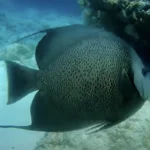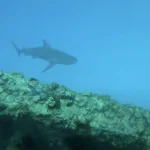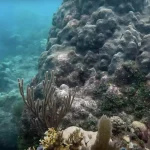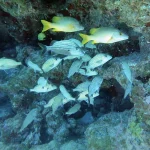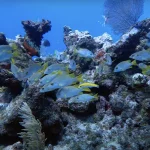Table of Contents
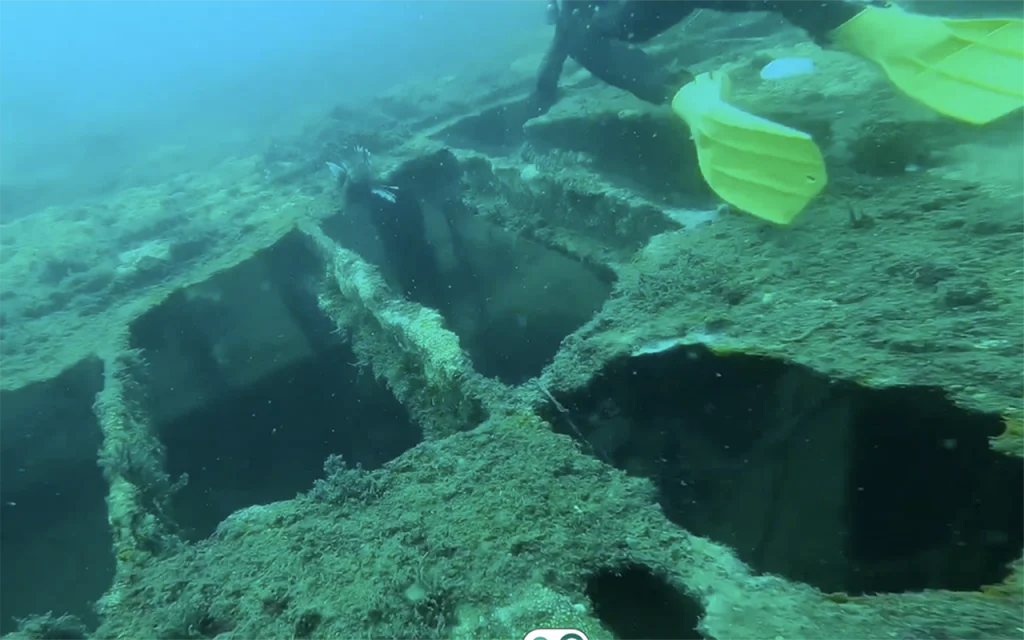
Today, the wreck of the USS Mindanao lies in a general north-south direction and has become a popular dive site, attracting divers interested in exploring its historical significance and the marine life that has made the wreck its home. The site has suffered some damage over the years, particularly during storms, which adds to its character and allure for underwater exploration.
Article at a Glance
- Historical Significance: The USS Mindanao (ARG-3) served in the U.S. Navy during World War II, sustaining damage from the explosion of the USS Mount Hood in 1944, which adds a compelling narrative to the dive site.
- Wreck Location: The wreck is located approximately 11 miles northeast of Ponce Inlet, Florida, with coordinates at 29°11’59″N latitude and 80°44’52″W longitude, resting at a depth of about 85 feet.
- Marine Life: The wreck has transformed into an artificial reef, attracting diverse marine species, including schools of bait fish, tomtate grunts, and mangrove snapper, along with vibrant coral and sponge growth.
- Identifiable Features: Divers can explore various historical features, such as the intact hull, remnants of the superstructure, open holds, and damage from the explosion, providing insight into the ship’s past.
- Safety Measures: Safety protocols include guided dives with experienced divemasters, pre-dive briefings, use of dive lines, buddy systems, and emergency equipment to ensure diver safety.
- Dive Shops: Several local dive shops, including Sea Dogs Dive Center, Ponce Inlet Watersports, and Daytona Beach Scuba, offer organized trips to the USS Mindanao, providing equipment rentals and guided experiences.
- Community Engagement: The dive site fosters a sense of community among divers, encouraging shared experiences and knowledge about the wreck’s history and marine ecology, enhancing the overall diving experience.
USS Mindanao Wreck Location Coordinates and Depth
Depth
The wreck rests at a depth of approximately 85 feet, with its main deck lying at about 60 feet below the surface.
Location Coordinates
The wreck of the USS Mindanao (ARG-3) is located approximately 11 miles northeast of Ponce Inlet, Florida. The coordinates for the wreck are:
- Latitude: 29°11’59″N
- Longitude: 80°44’52″W
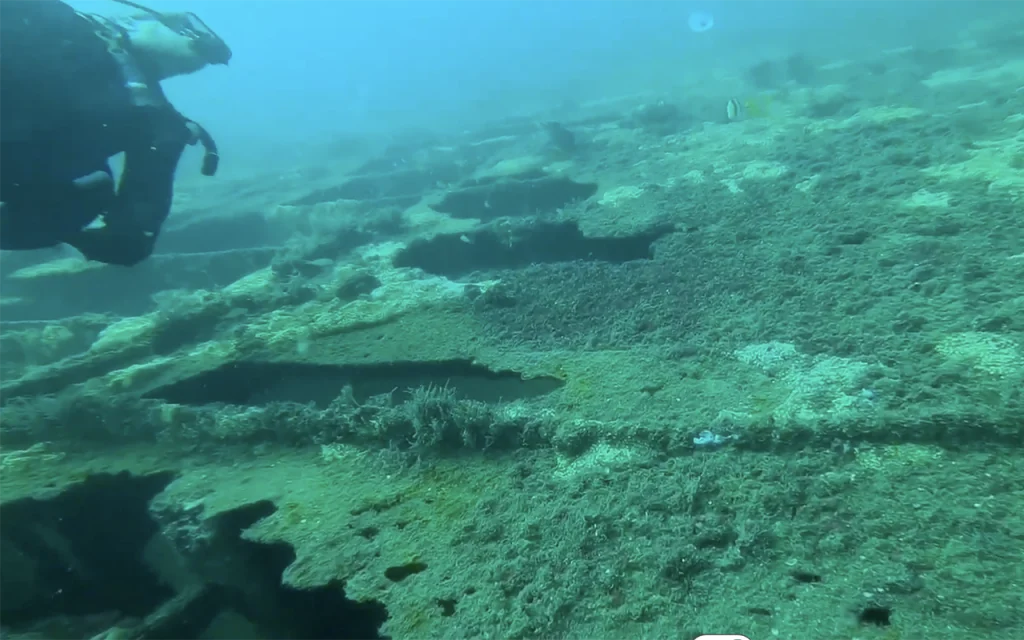
What to Scuba Divers Say About This Wreck
General Impressions
- Artificial Reef: The USS Mindanao is recognized as the oldest artificial reef in the Volusia County artificial reef system, attracting divers due to its historical significance and marine biodiversity.
- Diving Conditions: The wreck lies at a depth of approximately 85 feet, with the main deck at about 60 feet, making it accessible for divers with varying levels of experience. The site is generally described as a good dive location, often rated positively by divers who have explored it.
Marine Life
- Biodiversity: Divers frequently report encountering diverse marine life around the wreck, including schools of bait fish, tomtate grunts, mangrove snapper, and various corals and sponges growing on the hull. This vibrant ecosystem adds to the allure of the dive site, making it an exciting experience for underwater exploration.
Dive Experiences
- Wreck Features: The wreck is noted for its structural features, including open holds that provide opportunities for exploration. However, divers should be aware of the wreck’s condition, as it has suffered damage over the years, particularly during storms, which has altered its structure.
- Community Engagement: The dive community actively shares experiences and organizes dives to the site, contributing to a sense of camaraderie among divers who appreciate both the historical and ecological aspects of the wreck.
What Kind of Marine Life Can Be Found on The Wreck
- Schools of Bait Fish: Large schools of small bait fish are frequently observed swimming around the wreck.
- Tomtate Grunts: These fish are often seen in the vicinity, adding to the vibrant underwater scene.
- Mangrove Snapper: This species is commonly found around the wreck, often taking shelter in the structure.
- Coral and Sponges: The wreck is home to small clumps of ivory bush coral, along with various encrusting sponges and tunicates that grow on the steel hull, contributing to the biodiversity of the area.
- Other Species: Divers have also noted the presence of various other fish species, including barracuda and amberjack, which are attracted to the wreck as a feeding ground.
Key Information
| Key Information | Details |
|---|---|
| Wreck Name | USS Mindanao (ARG-3) |
| Location | Approximately 11 miles northeast of Ponce Inlet, Florida |
| Coordinates | 29°11’59″N, 80°44’52″W |
| Depth | Approximately 85 feet (main deck at 60 feet) |
| Historical Significance | Served in the U.S. Navy during World War II; damaged by the USS Mount Hood explosion in 1944 |
| Marine Life | Home to various species including bait fish, tomtate grunts, and mangrove snapper |
| Dive Conditions | Generally good visibility; suitable for divers of varying experience levels |
| Dive Shops Offering Trips | Sea Dogs Dive Center, Ponce Inlet Watersports, Daytona Beach Scuba |
| Safety Measures | Guided dives, pre-dive briefings, use of dive lines, buddy system, emergency equipment available |
What Makes USS Mindanao a Unique Diving Experience
Historical Significance
- World War II History: The USS Mindanao has a rich history, having served in the U.S. Navy during World War II. It was involved in significant operations and was damaged by the explosion of the USS Mount Hood in 1944, resulting in a compelling narrative that divers appreciate.
Dive Site Features
- Artificial Reef: As the oldest artificial reef in the Volusia County system, the wreck has transformed into a vibrant marine habitat, attracting a diverse array of marine life, which divers find appealing.
- Accessibility: The wreck is located approximately 11 miles off Ponce Inlet, resting at a depth of about 85 feet, with the main deck at 60 feet. This depth is suitable for divers of varying experience levels, making it accessible for many.
Marine Life
- Biodiversity: Divers frequently encounter schools of bait fish, tomtate grunts, and mangrove snapper, among other species. The presence of various corals and sponges growing on the wreck adds to the underwater scenery, enhancing the diving experience.
Structural Features
- Wreck Condition: The wreck features open holds and structural remnants that divers can explore. However, it has suffered damage over the years, particularly during storms, which adds an element of intrigue and exploration.
Community and Engagement
- Diving Community: The site is popular among local dive shops and enthusiasts, fostering a sense of community. Regular dives are organized, allowing divers to share experiences and knowledge about the wreck.
What is The Full History of This Wreck
Construction and Commissioning
- Laid Down: The USS Mindanao was originally laid down as the Liberty Ship SS Elbert Hubbard on April 11, 1943, at the Bethlehem Steel Sparrows Point Shipyard.
- Conversion and Commissioning: While under construction, it was converted into an internal combustion engine repair ship and commissioned into the U.S. Navy in November 1943.
World War II Service
- Deployment: After commissioning, the USS Mindanao was assigned to the South Pacific to support naval operations. It played a crucial role in maintaining the fleet’s readiness by repairing ships and equipment.
- Explosion Incident: On November 10, 1944, while docked at Manus Naval Base in the Admiralty Islands, the Mindanao was severely damaged by the explosion of the nearby ammunition ship USS Mount Hood. The blast resulted in the deaths and injuries of approximately 180 crew members and caused extensive damage to the ship’s hull and superstructure.
- Repairs and Continued Service: After undergoing repairs, the Mindanao returned to service in January 1945 and supported operations during the Okinawa Campaign. It remained active in the Far East, assisting Allied occupation forces until March 1946.
Decommissioning and Transition to Artificial Reef
- Decommissioning: The USS Mindanao was decommissioned on May 17, 1946, and placed in the Reserve Fleet. It remained in “mothballs” until it was stricken from the Naval Register in 1961.
- Donation and Scuttling: In March 1980, the ship was donated to the State of Florida for use as an artificial reef. After environmental remediation, the Mindanao was scuttled on November 11, 1980, approximately 11 miles northeast of Ponce Inlet, Florida, at a depth of 85 feet.
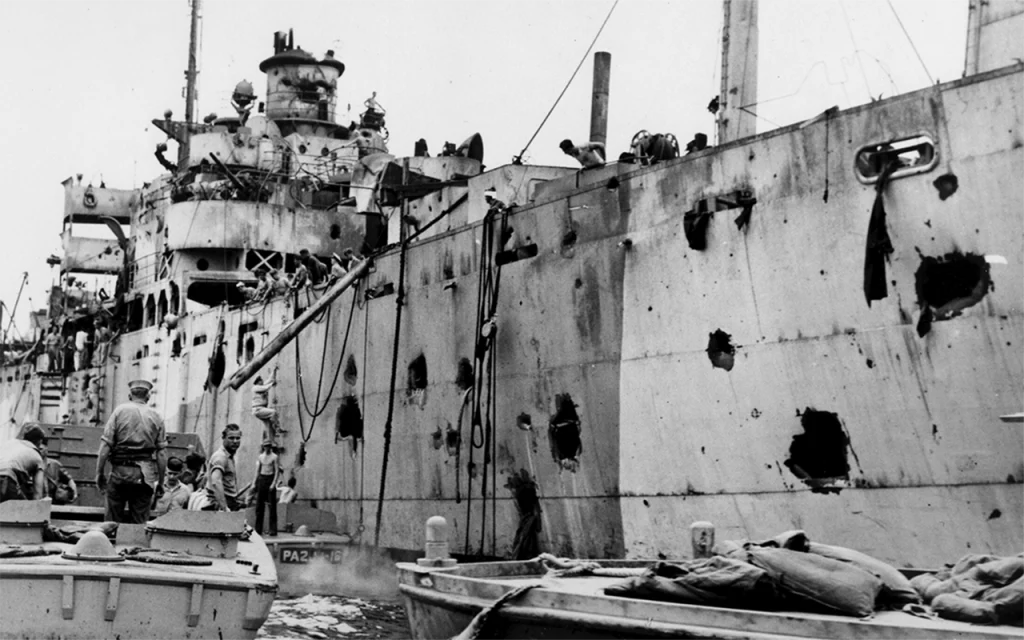
What Historical Features Can Still Be Identified on Wreck
Identifiable Historical Features
- Hull Structure: The main hull of the USS Mindanao remains intact, allowing divers to observe the ship’s design and construction. The hull is a testament to the ship’s original purpose as a repair vessel during World War II.
- Superstructure Remnants: Although damaged by the explosion of the USS Mount Hood and subsequent storms, parts of the superstructure can still be identified. This includes sections that were once used for navigation and operations.
- Open Holds: The wreck features open holds that divers can explore. These areas provide insight into the ship’s operational capabilities and the types of equipment that may have been stored on board.
- Damage from the Mount Hood Explosion: The damage sustained during the explosion in November 1944 is a significant historical feature. This event resulted in the loss of many crew members and altered the ship’s structure, marking a pivotal moment in its history.
- Bow Separation: Following severe winter storms in 1995, the bow of the USS Mindanao separated from the rest of the hull and now lies on its side. This separation adds a unique aspect to the wreck, illustrating the impact of environmental factors over time.
Marine Growth and Ecosystem
- Coral and Marine Life: The wreck has become an artificial reef, fostering marine life that thrives on the ship’s structure. Divers can observe various corals, sponges, and fish species that have made the wreck their home, showcasing the ecological transformation of the site.
What Safety Measures Are in Place for Divers Visiting USS Mindanao
- Guided Dives: Divers are typically accompanied by experienced divemasters who provide guidance and support throughout the dive, ensuring safety and assisting with navigation.
- Pre-Dive Briefing: Divers receive a thorough briefing before the dive, covering safety procedures, dive site conditions, and emergency protocols. This includes information on descent and ascent techniques.
- Use of Dive Lines: The dive boat is anchored to the wreck using a hook and line, allowing divers to use the line for safe descent and ascent. Safety stops can be conducted on this line, which helps prevent decompression sickness.
- Depth Awareness: The wreck lies at a depth of approximately 85 feet, with the main deck at about 60 feet. Divers are advised to be aware of their depth and to manage their bottom time accordingly.
- Emergency Equipment: Dive operators typically carry emergency equipment, including first aid kits and oxygen supplies, to address potential emergencies during the dive.
- Buddy System: Divers are encouraged to buddy up for safety. If a diver does not have a partner, divemasters are available to buddy up with them, ensuring that no one dives alone.
- Regulatory Compliance: Divers are informed about Florida’s diving regulations, including any specific rules related to marine life and conservation, which helps promote safe and responsible diving practices.
Dive Shops That Prove Diving Trips to This Shipwreck
- Sea Dogs Dive Center: This dive shop organizes trips to the USS Mindanao, providing guided dives and necessary equipment for divers. They cater to various skill levels and ensure safety during dives.
- Ponce Inlet Watersports: Known for offering a range of diving services, this shop includes trips to the USS Mindanao in their schedule. They provide guided tours and equipment rentals.
- Daytona Beach Scuba: This dive shop also offers excursions to the USS Mindanao, focusing on both recreational diving and educational experiences about the wreck’s history.
Central Florida Wrecks
- SS Breconshire
- Georges Valentine
- Hog Heaven
- Urca De Lima
- USS Rankin
- Ana Cecilia
- United Caribbean
- USS Mindanao
- The Laertes
- Berry Patch Tug Wreck
- The Liberty Ship
- The Ana Cecilia
- The Cities Service Empire
- USS Accokeek
- The Tortuga Wreck
- Princess Ann Wreck (Palm Beach)
- Okinawa Wreck (Pompano Beach)
- MG-111 Wreck (Jupiter)
- Lady Luck Wreck (Pompano Beach)
- Rodeo 25 Wreck (Pompano Beach)
- Lowrance Wreck (Pompano Beach)
- RSB-1 Wreck (Deerfield Beach)
- Rebel Wreck (Deerfield Beach)
- Noulla Express Wreck (Fort Lauderdale)
- Sucre Wreck (Fort Lauderdale)
- Captain Tony Wreck (Pompano Beach)
- Peter McAllister Wreck (Pompano Beach)
- Guy Harvey Wreck (Fort Lauderdale)
- Quallman Tugs Wreck (Pompano Beach)
- Miller Lite Wreck (Pompano Beach)

